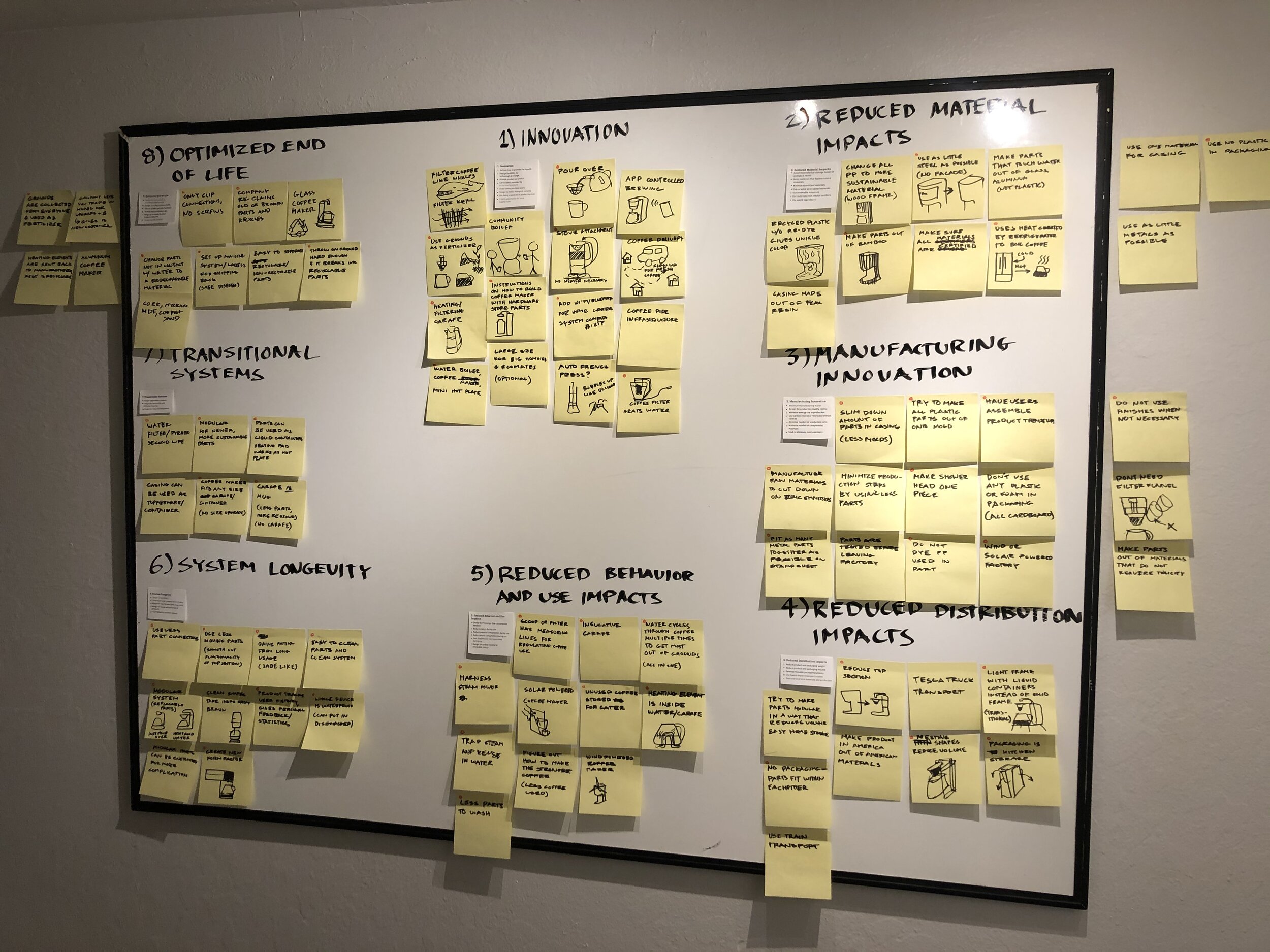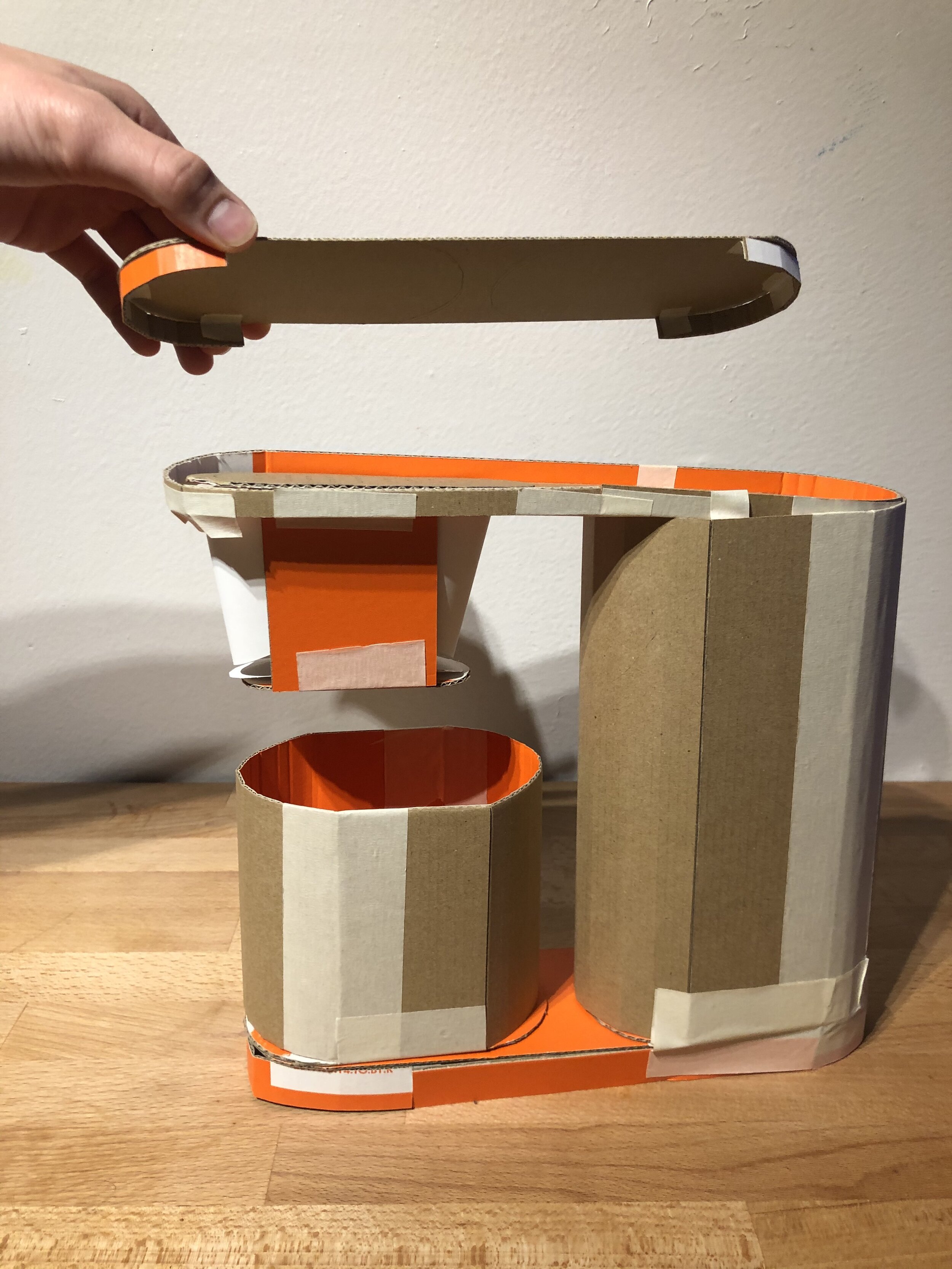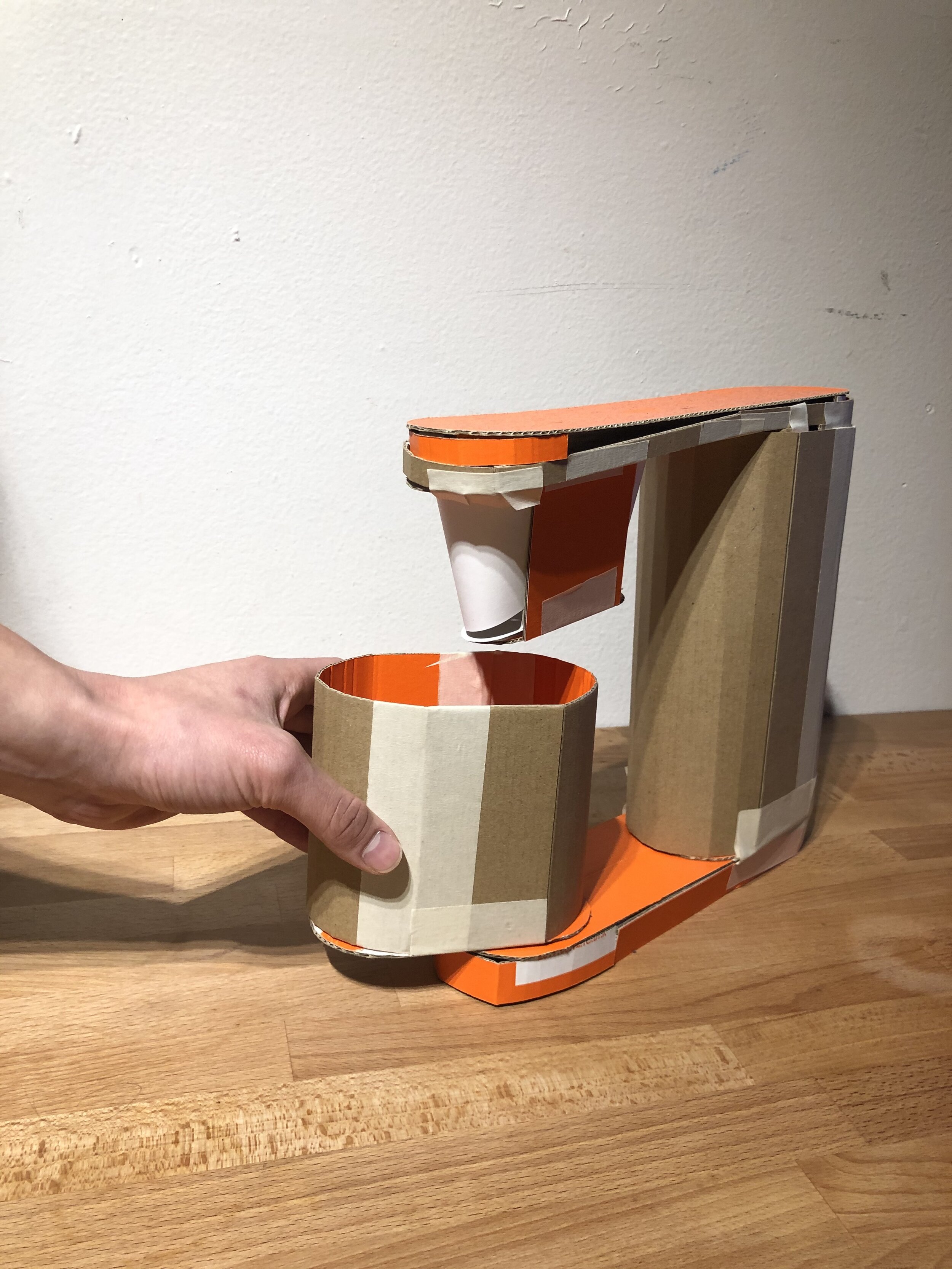
Simple Drip
Design ProcessPrompt:
Redesign a Product for Sustainability
Chosen Product:Crux 5 Cup Coffee Maker
Research
Strengths
Cheap
Good looking for pricepoint
Reusable filter
Easy to use
Weaknesses
Lots of plastic
Brews coffee on only one setting
Can burn coffee if left on too long
Unnecessary material usage
Possibly unnecessary parts in assembly or function
Must wash 3 different parts after each use
Opportunities
Reconfigure parts
Take away filter funnel
Recycle water through coffee to extract most out of coffee
Use as little plastic as possible
Heat coffee from carafe, eliminate stand
Insulate carafe
Use auto water boiler mechanics
Look into more efficient ways to heat water
Get more use out of coffee grounds
Threats
More sustainable materials may be more expensive (push product out of current market position)
Reconfiguring parts may affect taste of coffee
Must keep similar strengths and keep ease of use
Must be safe to use
Research Takeaways
Why People Use Coffee Makers
Easy to use
Cheap
Produce a large amount of Coffee and keeps it warm
Common Problems with Coffee Makers
Some grounds are wasted by the spout not covering the whole filter
Heating plate is much hotter than 200 degrees, often burns coffee
Should not actually drink coffee before it is done filtering, different flavors are released at different points of the process
Disassembly
How it Works
Part Categorization
Each part’s material, weight and manufacturing process was identified.
Sustainability AnalysisSustainability Guide
For this project, I referenced the Okala Practitioner, an ecological design handbook when making design decisions.
Product Life Cycle Analysis
While conducting a life cycle analysis, one must take into consideration each section of this wheel for the product in question.
Ecological Strategies
The Okala Practitioner offers 8 different areas of strategies in this design, summed up by this wheel.
Okala Impact Factor
In the Okala Practitioner, there are specific ecological impact values offered for material, manufacturing process, transportation, and type of disposal.
To find the Okala Impact Factor of one part, you multiply the weights and distances into the impact values, and add the totals.
Crux 5 Cup Coffee Maker
Okala Impact Factor/Hour = .198697

IdeationConcept Brainstorm
To think of as many sustainable design options as possible, I brainstormed using the 8 ecological strategy sections of the Okala Wheel
Five Initial Concepts
(slide for description)

Sheet metal would allow for low impact manufacturing and low volume shipping

A bamboo concept that minimalizes components

An insulative aluminum concept with uniquely hinged parts

A concept with simple construction a unique aesthetic

A concept where the water pipe serves as most of the construction which would cut manufacturing costs and material usage
Chosen Concepts
These three concepts defined 3 clear ways this product could be re-designed, each harnessing sustainable design techniques in their own way.
Omitted Concepts
These concepts were more vauge and their sustainability benefits were mostly covered by the other concepts.
RefinementRefined Concepts
Direction 1
Direction 1 Benefits
Simple construction allows for easy cleaning and low part count
Water dispersed evenly over grounds
Insulated Glass Carafe keeps coffee warm, not hot
Direction 2
Direction 2 Benefits
Water Pipe is used as construction, reducing much encasement and structural material
Coffee is evenly dispersed over grounds
Heating element is encased in cork, insulating the coffee from the direct heat of the heater
Direction 3
Direction 3 Benefits
Construction allows coffee maker to pack flat for more sustainable shipping and storage.
Extremely minimal, low weight cuts distribution costs
Water is dispersed evenly over grounds
Okala Impact Factors/Hour
Direction 1
0.014822
Direction 2
0.014208
Direction 3
0.020201
I chose Direction 2 for the final direction because it scored the lowest on the impact factor scale, and was the most interesting and realistic design.
Packaging
Simple Drip’s Packaging uses minimal ink, and has a smaller overall volume than the original.
10.5 x 6 x 7.5
472.5 cubic inches
9.25 x 8.75 x 4.5
364.21 cubic inches
The redesigned product’s packaging allows for more efficient shipping and storage.
Comparison
Okala Impact Factor/Hour
0.019870
Okala Impact Factor/Hour
0.009344
The redesigned product cuts the original environmental impacts in half










































